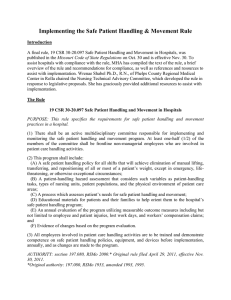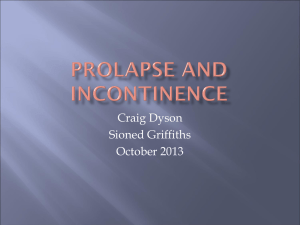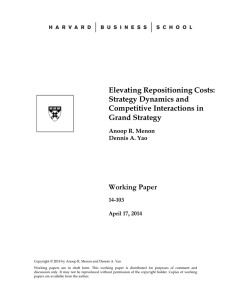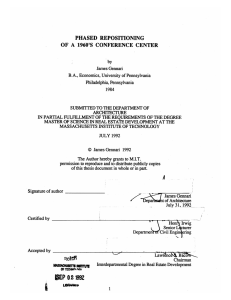article - Russian Urology Today
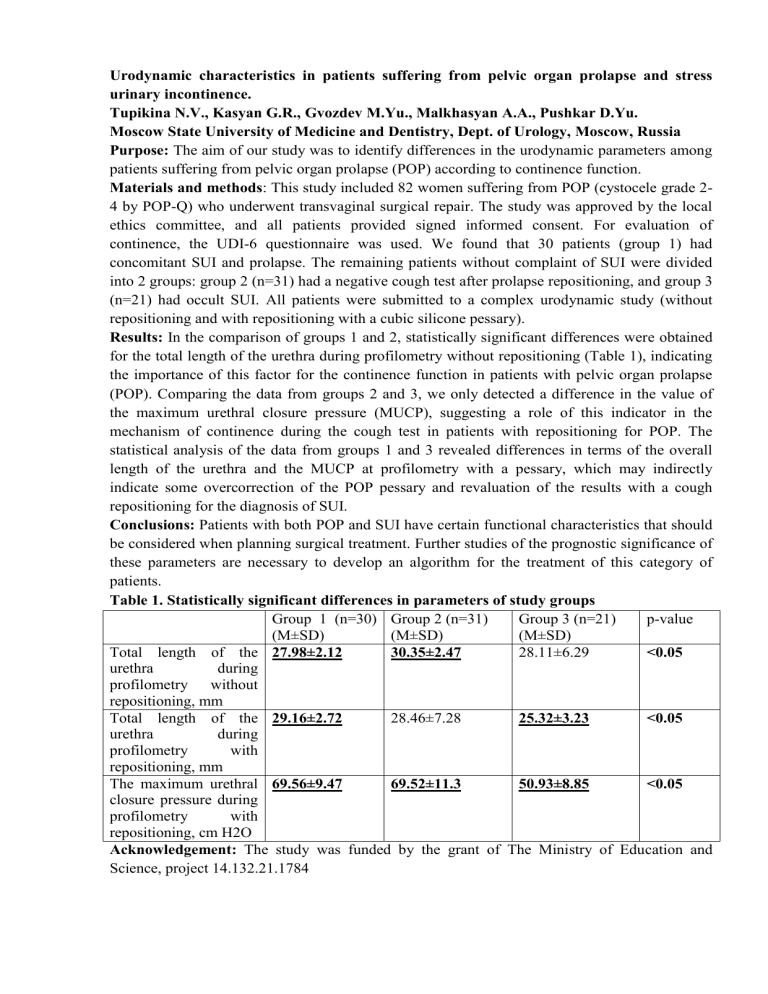
Urodynamic characteristics in patients suffering from pelvic organ prolapse and stress urinary incontinence.
Tupikina N.V., Kasyan G.R., Gvozdev M.Yu., Malkhasyan A.A., Pushkar D.Yu.
Moscow State University of Medicine and Dentistry, Dept. of Urology, Moscow, Russia
Purpose: The aim of our study was to identify differences in the urodynamic parameters among patients suffering from pelvic organ prolapse (POP) according to continence function.
Materials and methods : This study included 82 women suffering from POP (cystocele grade 2-
4 by POP-Q) who underwent transvaginal surgical repair. The study was approved by the local ethics committee, and all patients provided signed informed consent. For evaluation of continence, the UDI-6 questionnaire was used. We found that 30 patients (group 1) had concomitant SUI and prolapse. The remaining patients without complaint of SUI were divided into 2 groups: group 2 (n=31) had a negative cough test after prolapse repositioning, and group 3
(n=21) had occult SUI. All patients were submitted to a complex urodynamic study (without repositioning and with repositioning with a cubic silicone pessary).
Results: In the comparison of groups 1 and 2, statistically significant differences were obtained for the total length of the urethra during profilometry without repositioning (Table 1), indicating the importance of this factor for the continence function in patients with pelvic organ prolapse
(POP). Comparing the data from groups 2 and 3, we only detected a difference in the value of the maximum urethral closure pressure (MUCP), suggesting a role of this indicator in the mechanism of continence during the cough test in patients with repositioning for POP. The statistical analysis of the data from groups 1 and 3 revealed differences in terms of the overall length of the urethra and the MUCP at profilometry with a pessary, which may indirectly indicate some overcorrection of the POP pessary and revaluation of the results with a cough repositioning for the diagnosis of SUI.
Conclusions: Patients with both POP and SUI have certain functional characteristics that should be considered when planning surgical treatment. Further studies of the prognostic significance of these parameters are necessary to develop an algorithm for the treatment of this category of patients.
Table 1. Statistically significant differences in parameters of study groups
Group 1 (n=30)
(М±SD)
27.98±2.12
Group 2 (n=31)
(М±SD)
30.35±2.47
Group 3 (n=21)
(М±SD)
28.11±6.29 p-value
Total length of the urethra during profilometry without repositioning, mm
Total length of the urethra profilometry during with repositioning, mm
The maximum urethral closure pressure during profilometry with repositioning, cm H2O
29.16±2.72
69.56±9.47
28.46±7.28
69.52±11.3
25.32±3.23
50.93±8.85
<0.05
<0.05
<0.05
Acknowledgement: The study was funded by the grant of The Ministry of Education and
Science, project 14.132.21.1784
